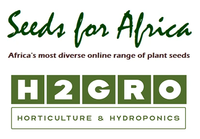Protea Seeds
Germination Stimulant - Cape Seed Primer - Super Smoke Plus
Greatly improves success in the germination of Protea, Leucospermum, Leucadendron, Heath Shrubs (Ericas), Strelitzias, Restios, Cape Bulbs, Mesembs and many other seeds.
The disc is soaked in water to create "smoke water". This simulates the natural conditions of the first rains after the winters bushfires which promote germination.
One disk will provide enough smoke water to treat 100 seeds.
Click here to select a pack size to add to your shopping cart.






